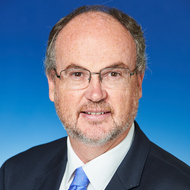Round 19 successful projects revealed
| Date: | Wednesday, 22 May 2019 |
|---|
- Round 19 of EIS co-funded drilling program offers $5.12 million to 45 projects
- Nearly a third of exploration projects target battery materials
Nearly a third of successful applicants in the latest round of the Exploration Incentive Scheme’s (EIS) Co-funded Exploration Drilling Program hope to discover battery materials.
A total of $5.12 million in grants is being offered to 45 companies and prospectors selected by the McGowan Government in Round 19 of the program, which encourages innovative drilling in greenfields areas.
Most of the explorers hunting commodities needed for Western Australia’s fast-growing battery industry are searching for nickel, with others seeking lithium, cobalt, rare earth elements and graphite.
Also eligible for co-funding are projects targeting traditional metals such as gold, copper, silver and base metals, a project looking for diamonds and another exploring for petroleum.
The project locations match the diversity of commodities, ranging from the South-West to the east Kimberley, Goldfields and remote regions of Western Australia’s eastern border.
Since it commenced in 2009, the EIS drilling program has offered funding to more than 900 projects resulting in more than 745,500 metres of drilling across the State.
The next round of the program opens in August for co-funded drilling in 2020.
For more information on the Round 19 applications and a map of projects, visit http://www.dmp.wa.gov.au/Geological-Survey/EIS-Government-co-funded-1433.aspx
Comments attributed to Mines and Petroleum Minister Bill Johnston:
“The sharp rise in popularity of battery materials among explorers underscores the importance of the McGowan Government’s Future Battery Industry strategy.
“We’re pleased that this round reflects such a varied mix of new-energy and traditional exploration projects.
“The EIS program has resulted in major discoveries, with more being made each year, all of them increasing the odds of opening new mines and creating jobs.”

